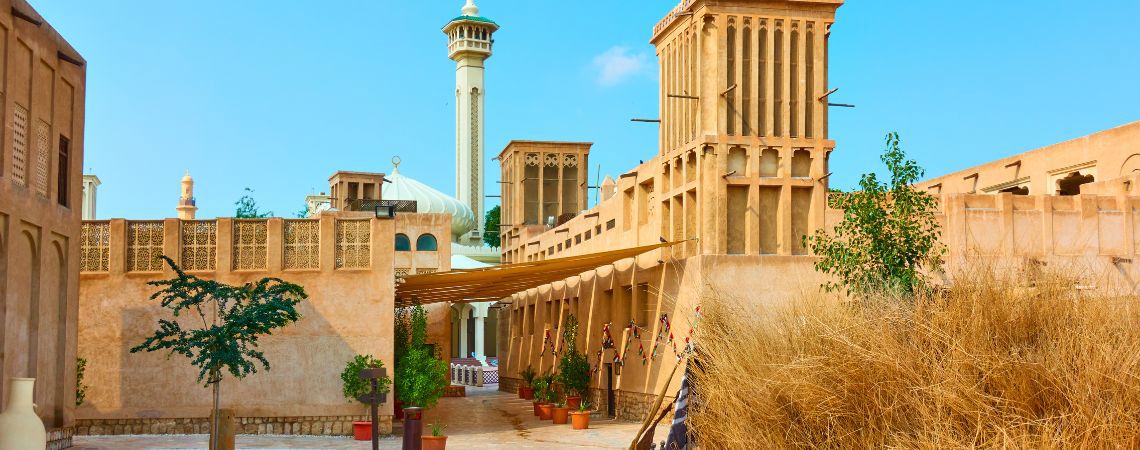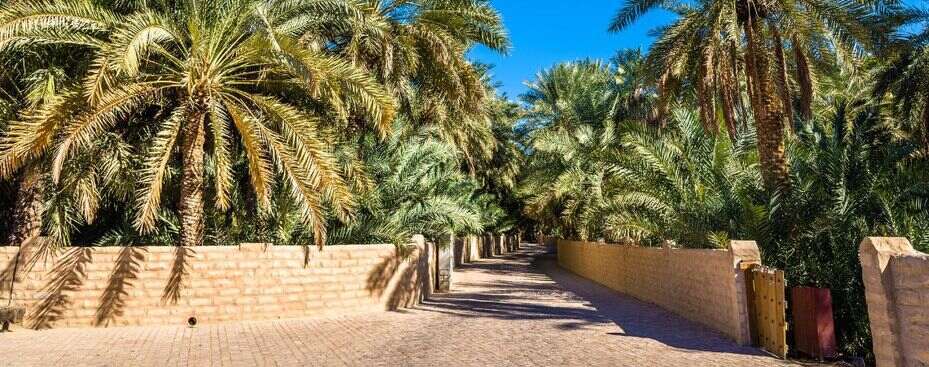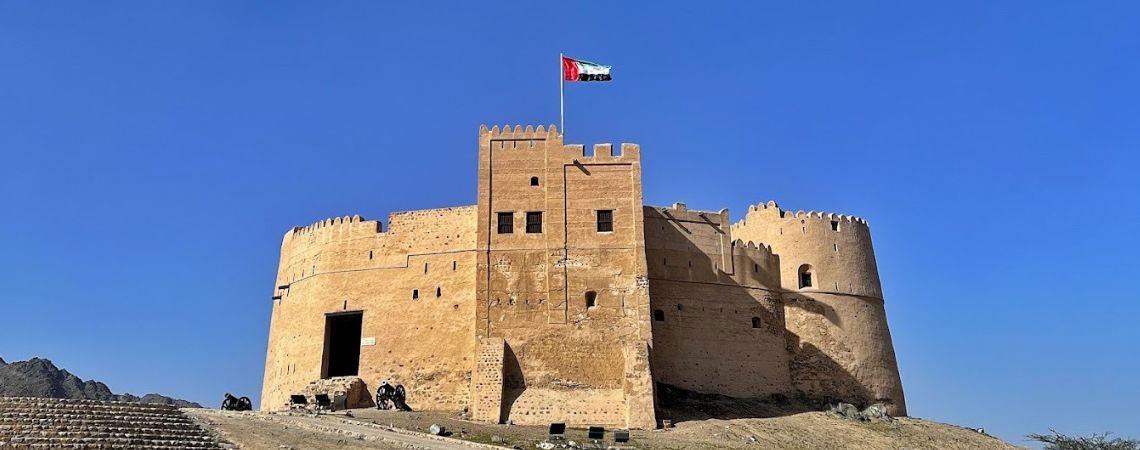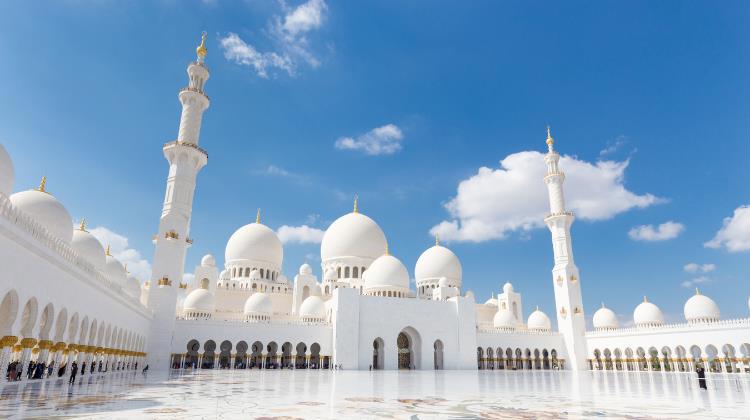The UAE is a land where history meets modernity, and every Emirate offers a peek into its rich and colorful past. Beyond the luxury malls and high-end resorts lies a treasure trove of cultural heritage. These iconic historical landmarks reflect the UAE’s traditions, stories, and identity. Ideal for both residents and tourists, they offer unforgettable experiences. Ready to explore the Emirates through a heritage lens?
Al Fahidi Historical Neighbourhood, Dubai

Tucked away in Bur Dubai, this district is a preserved remnant of Dubai’s pre-oil era. The sandy lanes, coral walls, and wind towers speak of a time before skyscrapers. Museums, cafés, and art spaces now thrive in these traditional buildings. It’s the perfect place to experience old Dubai while supporting local crafts. A hotspot for history lovers, artists, and culture-conscious shoppers alike.
- Visit the Sheikh Mohammed Centre for Cultural Understanding to experience traditional Emirati hospitality, food, and guided heritage tours.
- Stop by XVA Art Hotel, a fusion of boutique accommodation and gallery, featuring Emirati and Middle Eastern art and design.
- Browse the Al Fahidi Street souks for unique handcrafted souvenirs, including lanterns, calligraphy, and miniature dhow models.
Pro Tip: Visit during the Sikka Art Festival in March to enjoy free entry, live performances, and artisan market stalls.
Qasr Al Hosn, Abu Dhabi
As Abu Dhabi’s oldest stone structure, Qasr Al Hosn holds a prestigious place in Emirati history. Originally built as a watchtower in the 18th century, it evolved into a royal residence and government headquarters. Today, it stands as a symbol of heritage and resilience. Visitors can explore galleries, cultural displays, and workshops. It's a must-visit for anyone curious about Abu Dhabi’s rise.
- Explore the House of Artisans, where local women and craftsmen demonstrate palm-weaving, embroidery, and pottery traditions.
- Enjoy seasonal events like the Qasr Al Hosn Festival, where entry is free and shopping pavilions feature traditional Emirati products.
- Purchase authentic souvenirs and heritage books from the on-site cultural gift shop, supporting UAE artisans and authors.
Pro Tip: Entry is complimentary on National Day and during official cultural weeks—check the Qasr Al Hosn website for announcements.
Hatta Heritage Village, Dubai
Surrounded by the Hajar Mountains, Hatta Heritage Village recreates a traditional Emirati settlement. This 3,000-year-old site includes mud-brick houses, a central fort, and defensive watchtowers. With a serene mountain backdrop, the village blends nature with history. It’s a favorite for UAE residents seeking a cultural staycation. Nearby attractions like the Hatta Dam and Honeybee Garden make it even more engaging.
- Wander through reconstructed homes and mosques, fully furnished with historical tools and photographs from the pre-union era.
- Visit the Hatta Dam, a tranquil spot for kayaking and scenic photography—just a short walk from the village.
- Drop by the Honeybee Garden & Discovery Center to learn about local honey production and buy fresh, organic varieties.
Pro Tip: Visit midweek to avoid tourist traffic, and enjoy exclusive discounts at local shops and food stalls.
Al Ain Oasis, Al Ain

A UNESCO-listed heritage site, Al Ain Oasis showcases the ingenuity of ancient irrigation with its falaj system. With over 147,000 date palms, it’s a refreshing retreat in the heart of the desert. It represents sustainable living long before modern innovation. Shaded walkways make it ideal for strolls and family picnics. Nearby heritage markets complement the experience with local goods.
- Discover the ancient falaj irrigation system, still functional and crucial to the region’s agricultural history and development.
- Visit the Eco-Centre within the oasis for interactive exhibitions on sustainability and the UAE's green future.
- Shop for Emirati dates, fresh honey, and palm crafts from nearby farmer’s stalls that reflect local agricultural pride.
Pro Tip: The Al Ain Oasis mobile app provides free audio tours and interactive maps to guide your visit efficiently.
Sharjah Heritage Area, Sharjah
Sharjah, the UAE’s cultural capital, preserves its history through this beautifully maintained heritage zone. It houses multiple museums, markets, and restored homes of notable families. Visitors enjoy immersive exhibits on calligraphy, maritime trade, and daily Emirati life. Traditional souks blend heritage with affordable shopping. The district is a model of how commerce and culture can thrive together.
- Step inside the Sharjah Calligraphy Museum to admire works from local and international artists practicing this sacred art.
- Visit the Bait Al Naboodah, a beautifully restored home that offers a peek into elite family life in the 19th century.
- Shop at Souq Al Arsah, the oldest market in Sharjah, filled with incense, pashminas, antiques, and handcrafted accessories.
Pro Tip: Friday mornings offer quieter hours and deeper discounts, especially at Souq Al Arsah’s antique stalls.
Dhayah Fort, Ras Al Khaimah
Dhayah Fort stands tall on a hill in Ras Al Khaimah, marking the site of a historic battle with British forces in 1819. It’s the only remaining hilltop fort in the UAE. Climbing its stone steps rewards visitors with panoramic views of palm groves and coastlines. The journey is both scenic and symbolic. It’s a powerful reminder of the country’s resistance and heritage.
- Hike up the zigzag stone path to reach the fort’s summit, offering a 360-degree view of the lush RAK valley.
- Read information panels that narrate the history of the fort’s strategic importance and military confrontations.
- Explore nearby date farms and local eateries, which offer traditional meals and snacks at budget-friendly prices.
Pro Tip: Sunset visits offer cooler weather and unmatched views—don’t forget your camera and water bottle!
Fujairah Fort, Fujairah

Nestled between the Hajar Mountains and the sea, Fujairah Fort dates back to the 16th century and is the UAE’s oldest. It served as a defensive stronghold and royal residence. Today, it’s a peaceful spot surrounded by heritage homes and gardens. The adjacent Fujairah Museum enriches the experience with archaeological exhibits. The nearby Friday Market is a paradise for bargain hunters.
- Take a guided tour of the fort to learn about its battle-scarred walls and restored watchtowers.
- Explore the Fujairah Museum just steps away, home to weapons, utensils, and rare archaeological finds.
- Head to the Friday Market, known for pottery, rugs, dried fruit, and traditional crafts sold by local families.
Pro Tip: Carry cash in small denominations to negotiate better deals at the market stalls.
Umm Al Quwain Fort, Umm Al Quwain
Located in the heart of the emirate, this modest yet meaningful fort once served as the royal residence and seat of government. Today, it houses the Umm Al Quwain Museum. The exhibits reflect coastal life, fishing, and pearl diving. Its location makes it easily accessible. It’s perfect for history enthusiasts seeking lesser-known yet enriching experiences.
- Walk through restored rooms that housed ruling families and view displays of tribal attire, weapons, and maritime tools.
- Discover the region’s fishing and pearl trade history, vital industries before oil was discovered.
- Browse nearby souks selling dried fish, spices, and pearl-inspired jewelry—excellent for gifting or collecting.
Pro Tip: Combine this trip with a visit to Dreamland Aqua Park or Falaj Al Mualla Fort to maximize your outing.
Jumeirah Mosque, Dubai
This grand mosque in Jumeirah is one of the few in the UAE open to non-Muslims, promoting interfaith understanding. Built entirely from white stone in the Fatimid style, it is a symbol of Dubai’s openness and elegance. Daily guided tours enhance the visitor experience. It also sits near trendy shopping and dining areas. A must-visit for culture seekers and architecture admirers.
- Join the “Open Doors, Open Minds” program for a cultural session complete with Q&A and traditional Emirati refreshments.
- Admire intricate Islamic architecture, from its central dome to stained-glass windows and marble minarets.
- After the tour, explore Boxpark Dubai, where you’ll find quirky cafes, urban fashion boutiques, and art murals.
Pro Tip: Wear modest clothing or borrow abayas and kanduras provided at the mosque entrance.
Sheikh Zayed Grand Mosque, Abu Dhabi

One of the largest and most beautiful mosques in the world, the Sheikh Zayed Grand Mosque is a masterpiece of Islamic architecture. With 82 domes, 24-carat gold chandeliers, and the world’s largest hand-knotted carpet, it amazes all who enter. It’s not only a spiritual site but also a cultural destination. Located near high-end shopping centers, it’s easily accessible for all.
- Take a guided walking tour to learn about the mosque’s construction, symbolism, and cultural importance.
- Marvel at the reflective pools and vast courtyard, especially stunning at night when the mosque is lit up.
- Head to The Galleria Mall nearby for luxury shopping and dining with scenic waterfront views.
Pro Tip: Book your tour in advance on the official website—it’s free and includes access to prayer halls.
Conclusion
The UAE’s historical landmarks are windows into a timeless legacy shaped by resilience, culture, and innovation. Each site offers more than a photo opportunity—they offer insight, inspiration, and affordable ways to experience the true spirit of the Emirates. So, next time you plan a weekend outing, let SavePlus UAE guide you toward both cultural enrichment and smart savings.
FAQ
What are the best free historical sites in the UAE?
Al Ain Oasis, Dhayah Fort, and Hatta Heritage Village offer free entry and rich cultural experiences.
Can I shop near UAE heritage landmarks?
Yes. Most sites are near traditional souks or local vendors selling cultural goods, crafts, and snacks.
Are historical landmarks child-friendly?
Absolutely. Places like Al Ain Oasis and Fujairah Fort are ideal for families with kid-friendly paths and educational displays.
When is the best time to visit these sites?
From October to April, the weather is pleasant. Morning visits provide the best experience with fewer crowds.
Are guided tours available in English?
Yes. Many sites offer multilingual guided tours, including English and Arabic, to cater to all visitors.






